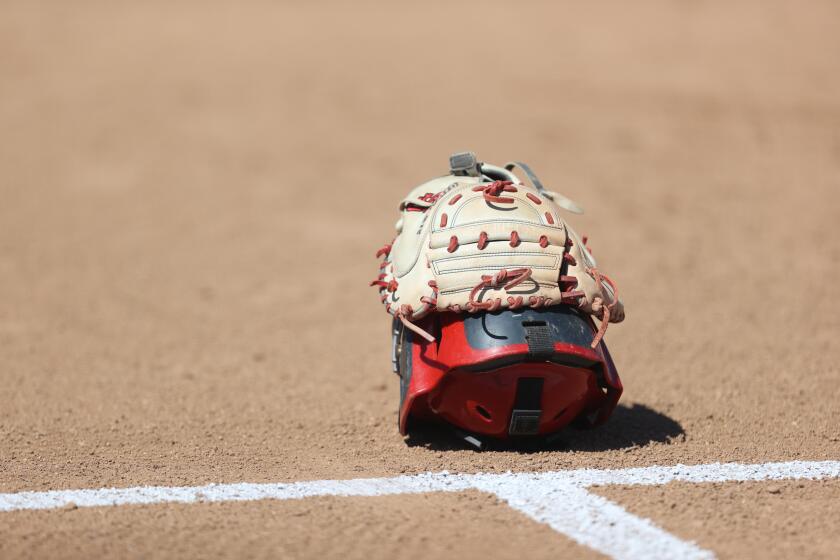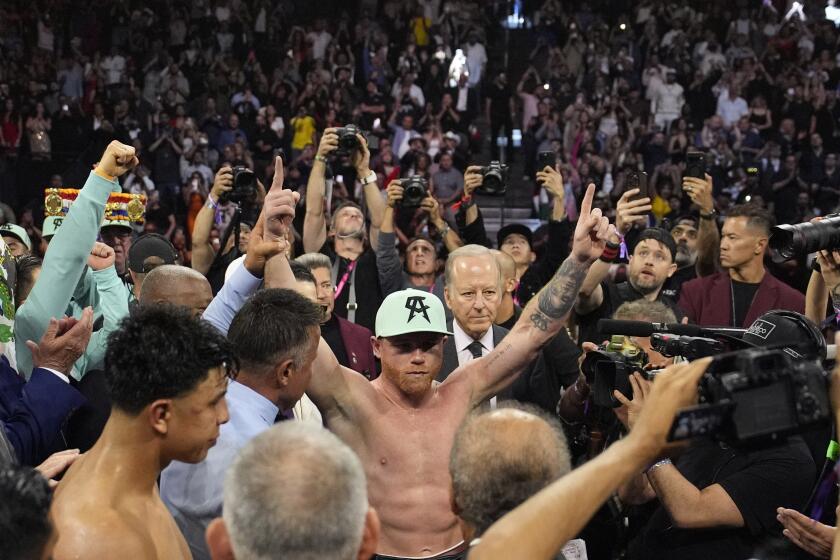He’s Lefty’s right-hand man
Dave Pelz was flabbergasted when one of the world’s most accomplished golfers approached him about providing instruction on the short game.
“I said, ‘You’ve got to be kidding. You’re already the best. Why do you want me?’ ” Pelz recalls.
Phil Mickelson told Pelz he wanted to shave one-quarter stroke per round off his average 18-hole score.
Since Pelz joined Team Mickelson in late 2003, the left-hander has not only accomplished his goal, but won three majors.
“We got about a stroke off his average the first year, a half stroke the second year and a little less than half a stroke the third year,” Pelz says.
Much of the improvement is due to the countless hours Mickelson devotes to chipping and putting. And therein lies a valuable lesson for weekend hackers.
Pelz Tip No. 1: If you want to improve your score, work more on your wedges and putter.
About two-thirds of all shots take place within 100 yards of the hole, Pelz says. So it befuddles him why so many high handicappers spend so much practice time pounding the driver.
A former NASA scientist, Pelz has spent the last three decades applying statistical research to golf instruction. His Dave Pelz Scoring Game School is the only elite clinic in the country that concentrates exclusively on the short game.
Pelz and I scheduled a round at Calabasas Country Club in mid-February. He wore a safari hat and bright yellow vest under a blue Goretex jacket with “Escondido” (his country club in Horseshoe Bay, Texas) emblazoned on the chest.
On this day, Pelz was justifiably giddy. Less than 24 hours earlier, his star pupil blew away the field in the AT&T; Pebble Beach Pro-Am. During the national telecast, Mickelson credited Pelz with correcting a flaw in his putting stroke.
Before teeing off, we head over to the newly installed practice facility that hosts the Pelz one-day short game clinic ($395). Pelz pulls out a device called the “TrueRoller.”
Standing on the green, Pelz asks me to read the line of a 20-foot putt. I predict the ball will move 12 inches from left to right. Pelz places several balls in the “TrueRoller” and measures the break at about two feet.
Pelz Tip No. 2: Play more break and you’ll sink more putts.
Pelz says that the average golfer reads only one-third of the proper break. He also notes that PGA Tour players miss putts below the hole 75% of the time.
When he began working with Mickelson, Pelz didn’t mess with his grip, stance or posture. Instead, he focused on reading greens.
With the aid of Pelz’s voice-activated “LazrAimer,” Mickelson could not believe how badly he had been misreading greens. After implementing changes suggested by Pelz, Mickelson now misses the same number of putts above the hole as he does below.
As we head to the first tee, Pelz has a set of never-used Callaway woods and irons that were given to Mickelson a year ago. I can’t help but notice in his bag are four Pelz custom wedges and two putters.
Both of our second shots land side-by-side about 10 yards short of the green. I find myself in a chipping contest with the bearded short-game master.
True to form, Pelz puts his wedge shot three feet past the hole. I chunk mine onto the front of the green. My 40-foot putt almost goes in before dying to the left of the hole.
“Lumpy doughnut,” Pelz says.
Huh?
Pelz has calculated that each foursome leaves about 500 footprints on every green. He points out that two-thirds of those impressions are made inside 10 feet and outside one foot of the hole.
“Every putt on this green has to go through a lumpy doughnut to get to the hole,” Pelz says. “It’s like putting through a minefield.”
Pelz Tip No. 3: To hold the line, stroke your putts to land 17 inches past the hole.
On the second hole, a short par four, our tee shots land on the fairway. I then plop a nine-iron shot into a pond.
Pelz hurries over and tells me to try another shot, but this time place the ball an inch back in my stance. I strike it crisply over the water and onto the green.
Pelz Tip No. 4: The best way to correct a shot is to adjust your ball position, not your swing.
“Most golfers don’t know enough about their swing to change it,” Pelz says.
My ball is perched on the fringe of the green. Do I keep the pin in the hole or pull it out?
Pelz Tip No. 5: Always utilize the flagstick whenever your ball is off the green.
According to Pelz research, 31% more chip shots will drop in with the pin left in the hole.
Pelz is so passionate about teaching the game that it has taken us two hours to get through our warmup session and two holes. He says he has to pick up a friend at the airport.
Before leaving, Pelz apologizes profusely for showing up an hour late. He and his wife got lost driving from Palm Springs.
Pelz Tip No. 6: Always use a GPS system when driving on unfamiliar highways.
*
*
(BEGIN TEXT OF INFOBOX)
Five questions for Dave Pelz
Question: Why did you quit your job as a NASA scientist to become a golf instructor?
Answer: I realized I’m a golf nut who loves physics rather than a physicist who loves golf.
*
Q: Why do you focus exclusively on the short game?
A: All I’m doing is fishing where the fish are.
*
Q: What is your star pupil Phil Mickelson really like?
A: He’s a class act. It’s unbelievably enjoyable to work with him.
*
Q: What’s your secret to helping Mickelson prepare for the Masters?
A: It’s so hard to chip because the greens are so fast. You have to hit the ball perfectly in the right spot. We’ve got notes from the last three years.
*
Q: Have you ever played Augusta National?
A: Once. I’m standing on the first tee and notice there are no wedges and no putter in my bag. I played the whole day putting with a driver.
More to Read
Get our high school sports newsletter
Prep Rally is devoted to the SoCal high school sports experience, bringing you scores, stories and a behind-the-scenes look at what makes prep sports so popular.
You may occasionally receive promotional content from the Los Angeles Times.






